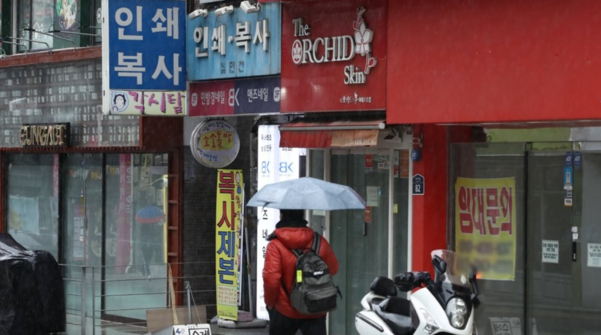Input 2021.03.02 10:28 | Revision 2021.03.02 10:42
“Employment turmoil such as a sharp decline in employment and the aftermath of sluggish service industry…
In the aftermath of the re-proliferation of the novel coronavirus infection (Corona 19), the companion index, which shows the current economic situation, declined in eight months. This is a brake on the trend of economic improvement driven by increased exports. The decline in the economic coincidence index means that economic activities, such as production and investment, are not expanding, but are developing in a shrinking trend. Employment turmoil, such as a sharp drop in employment due to strengthening social distancing, sluggish face-to-face service such as food and lodging, and heavy snowfall and cold wave in January had adverse effects on economic improvement. The construction industry’s failure to survive due to intensive real estate regulations is also holding back on the economic improvement.
On the other hand, the cyclical fluctuations of the leading index, indicating the future economic outlook, continued to rise for the eighth month due to the rise of the KOSPI index. However, the National Statistical Office explained that it is necessary to make a reservation as to whether or not the economic improvement will continue in the future, considering the disparity between the financial and real indicators, which are deepening after the corona crisis, and the uncertainty of the development of Corona 19.
According to the January industrial activity trend released by the National Statistical Office on the 2nd, the cyclical fluctuation of the coincident index, which shows the current economic situation, was 99.5, down 0.2 points (P) from the previous month. It has been eight months since May last year (-0.7P) that the cyclical fluctuation of the coincident index has turned downward. The economic coincidence index below the standard value of 100 indicates that the economy is contracting, while the decline in the index itself indicates that the contraction strength is strengthening. Among the components of the economic coincidence index, retail sales and facility investment increased, but employment (the number of non-farm, forestry and fisheries workers), construction investment (construction cost), and the service industry production index showed negative (-).

Accordingly, all industrial production in January also declined 0.6% from the previous month and turned to negative after eight months. This is because the mining industry (-1.6%) and the service industry (-0.2%) both declined. Mining industry production declined after three months, and service industry production has been on a decline for two consecutive months. The re-proliferation of the corona has strengthened social distancing.
Mining and industrial production declined 1.6% from the previous month, and showed a downtrend after three months since last October (-0.5%). It increased from automobiles (12.8%), but electronic parts decreased by 9.4% due to a decrease in production of related items such as LCD for TV and LCD for IT. Production of ship and aircraft related items such as container ships and aircraft parts also decreased by 12.4%.
Production in the service industry declined 0.2% from the previous month and continued to decline for the second month. Although it increased in finance and insurance (1.3%), the number of arts, sports, and leisure service businesses related to sports service, amusement parks, and other entertainment decreased by 15.4% due to business restrictions due to Corona 19. Sales of food and beverages and construction materials declined, resulting in a 0.8% decline in retail and wholesale businesses.
Manufacturing production increased in automobiles and cigarettes, but decreased by 1.7% from the previous month as electronic parts and other transportation equipment decreased, turning down after three months. It is analyzed that the base effect in December last year (2.7%) also worked. The average utilization rate of the manufacturing industry, which means production performance compared to production capacity, was 73.2%, down 1.1%p from the previous month.
The construction period, which represents the construction results already achieved, decreased by 6.0% from the previous month due to the decrease in both construction (-5.4%) and civil engineering (-7.8%) construction performance due to cold weather. Construction orders (Gyeongsang) increased by 10.6% from a year ago, as buildings such as houses, offices and stores (28.9%) increased. Facility investment decreased by investment in transportation equipment (-8.4%) such as automobiles, but increased investment in machinery (11.2%), such as special industrial machinery, increased 6.2% from the previous month, maintaining an uptrend for the third consecutive month.
Retail sales, which show consumption trends, increased 1.6% from the previous month, and the largest increase in five months since August last year (3.0%). Although non-durable goods such as pharmaceuticals (-0.1%) decreased, the demand for durable goods such as home appliances (4.8%) continued due to increased indoor life due to the prolonged Corona 19. Sales of semi-durable goods (1.0%) such as clothing also increased due to a decrease in the previous month and promotions. Retail sales and facility investment increased, but production and employment were sluggish, all industrial production shrank, and the economic coincidence index fell.
On the other hand, the cyclical fluctuation of the leading index, which predicts the future economy, was 102.7, up 0.3p from the previous month, continuing the upward trend for eight consecutive months. The cyclical fluctuation of the coincident index fell 0.2P to 99.5. However, it is explained by the National Statistical Office that the gap between financial and real indicators, which is deepening after the corona crisis, and the emergence of a mutant virus, are reserved depending on the development situation of Corona 19 in the future.
Regarding the prospect of future industrial activity trends, Eoun-sun said, “Export improvement is continuing and economic sentiment is improving slightly.” “The delay is a negative factor.”
